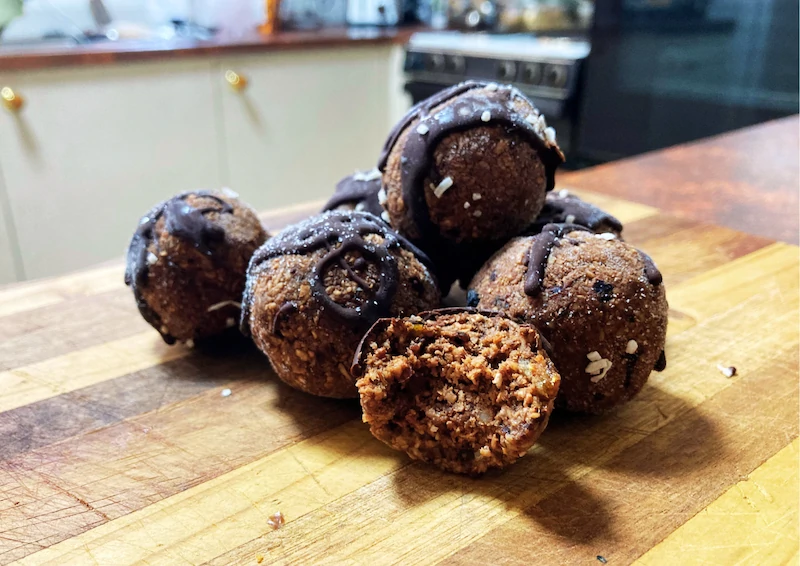
A lot of the hair care products we use can contain an assortment of ingredients, some you may be familiar with and others you may have never heard of. Since you care about the health of your hair and protecting the environment, it’s important your shampoo is also eco-friendly.
So, is shampoo eco-friendly? Many common shampoo brands are not eco-friendly as they contain synthetic ingredients that can be harmful to your health and pollute waterways. However, there are eco-friendly brands that produce shampoo with all-natural ingredients that are safe for your health and environmentally friendly.
If you can understand how shampoo works and what synthetic ingredients it typically contains, you can be more aware as a consumer and look to avoid them in order to make your hair care routine eco-friendly.
What’s in Your Shampoo?
Most common commercial shampoo brands contain a wide variety of synthetic ingredients that may or may not be harmful to your health or the environment. Since shampoo gets rinsed and goes down the drain, these synthetic chemicals can enter our waterways and cause harm to aquatic life.
Sulfates are chemicals used as cleaning agents that are commonly found in cleaning products, detergents, and even shampoo. Yep, that’s right, the same chemicals that are used to clean the grease off your kitchen counter may also be in your bottle of shampoo.
The two main sulfates used in common shampoo products are sodium lauryl sulfate and sodium laureth sulfate. These sulfates create a lathering effect on your hair and are very effective at removing dirt and oil. If your shampoo lathers easily in your hair, chances are it contains sulfates whereas a shampoo free of sulfates will not lather. Sulfates can be damaging to certain types of hair and cause skin inflammation, allergic reactions, or even dry out the scalp. Not desirable traits from a shampoo if you ask me.
Phthalates are a synthetic chemical known as “plasticizers” and create the gelling effect of your liquid shampoo. They may also be present in the fragrance of your shampoo giving it the nice desirable smell that we all know and love. Some types of phthalates have affected the reproductive system of lab animals. Their effects on exposure to humans are still unknown.
Concerned yet? These are just the health risks from repeated exposure to synthetic chemicals. There is also an environmental cost as many synthetic chemicals act as pollutants when entering waterways. Synthetic chemicals were not meant to be in contact with marine life, so over time, entire eco-systems can be adversely affected.
Studies have also linked the volatile organic compounds (VOCs) present in shampoo could be a significant contributor to air pollution. On top of that, common shampoo brands come in a plastic bottle, which depending on the type of plastic, may or may not be recyclable. This results in more plastic waste production.
What to Look for in an Eco-Friendly Shampoo
For most people, as long as it smells nice and keeps your hair clean, most shampoo brands will do. However, for the eco-friendly conscious, choosing the right shampoo is another story.
The best way to tell if your shampoo is eco-friendly is to look at the ingredients on the label. Many commercial brands will have a laundry list of synthetic ingredients, but here are some of the most common you should avoid:
- Sulfates and parabens – the most common ones include Sodium Lauryl Sulfate/Sodium Laureth Sulfate (SLS).
- Phthalates or Plasticizers- DBP (di-n-butyl phthalate), DEP (diethyl phthalate), and DEHP (di-(2-Ethylhexyl) phthalate.
- Synthetic fragrances – petroleum-based chemicals.
- Synthetic dyes – these are usually petroleum (plastic) based.
The bottom line: if you are struggling to understand the complex ingredients on the label, they are most likely synthetic chemicals.
An eco-friendly shampoo will be made from all-natural ingredients including essential oils, natural minerals, and fruit and plant extracts. These ingredients will give off a natural scent while still cleaning and providing your hair with all-natural nutrients. All ingredients should be clearly listed on the label and free of the above synthetic chemicals while being vegan and cruelty-free.
When choosing an eco-friendly shampoo or conditioner, look for brands that package their product without a plastic bottle. While some brands opt for recyclable aluminum or glass bottles, the most eco-friendly shampoos are those that come in bar form.
A shampoo or conditioner bar eliminates the need for any plastic which reduces your overall environmental waste. It will also last considerably longer than a conventional liquid shampoo that comes in a bottle, as you will only need a small amount in your hair and none will go wasted stuck inside the bottle.
Popular Eco-Friendly Shampoo Bars
More and more eco-friendly brands are beginning to pop up on the market that choose to make a responsible commitment to protecting the environment while sustainably producing a haircare product with our best health interests in mind.
Ethique Solid Shampoo and Conditioner Bars

Ethique takes our top pick with eco-friendly shampoo and conditioner bars that encourage you to “give up the bottle”. Each bar features different varieties and scents for all hair types and includes all-natural ingredients such as coconut oil and cocoa butter along with a selection of fresh-scented fruit and flower extracts. All of their bars are vegan, eco-friendly, cruelty-free, and are packaged in with limited compostable cardboard.
Each Ethique Solid Shampoo Bar (link to read reviews on Amazon) is equivalent to three bottles of shampoo (350ml each), so not only will it last longer than a single bottle but will also save you money. It’s TSA friendly so no more having your favorite liquid shampoo getting swiped at security or worrying about a broken bottle in your checked luggage.
Beauty and the Bees Moroccan Mud Shampoo Bar

Beauty and the Bees is a small brand that also produces hair care products for both men and women including shampoo and conditioner bars made from abnormal yet all-natural ingredients which include beer, apple cider vinegar, or eggs and lemon.
If you aren’t feeling that adventurous we suggest you start out with Beauty and the Bees Moroccan Mud Shampoo Bar (link to read reviews on Amazon) which is made from Rhassoul Clay found deep beneath the Atlas Mountains in Morocco. The result is a rich and spicy orange and coriander oil scent. Perfect for daily use on all different hair types, this shampoo bar is sulfate, paraben, and 100% plastic-free. Each bar lasts an equivalent of three bottles of shampoo (350ml each) outlasting your old standard bottle.
Yellow Bird All-Natural Shampoo Bar

Oils are actually good for our hair health they protect and help it grow. The problem is, some synthetic chemicals in shampoo can actually strip your hair of these much needed protective and nourishing oils.
The Yellow Bird All-Natural Shampoo Bar (link to read reviews on Amazon) is the perfect shampoo bar for those with sensitive scalps or struggling with dandruff. Also suitable for other hair types, it’s made from all-natural ingredients including kaolin clay and sea salt along with argan and jojoba oils. All ingredients are sulfate, silicone, paraben, and cruelty-free. A multi-purpose choice with scents for both men and women, each bar comes with a recyclable handy storage box ideal for traveling.
Final Thoughts
Let’s face it, your hair care should be guilt-free. You shouldn’t have to worry about potentially harming your health when washing up or harming the environment when your shampoo or conditioner is rinsed down the drain.
It’s worth mentioning there is a movement of people making the switch from synthetic hair care products to homemade ingredients such as baking soda and apple cider vinegar called “the noo poo method”. Results have been mixed as it takes some getting used to due to oil build up in the hair, but some have reported healthier and fuller hair after a few months.
Regardless of what you choose, ditching the bottle and moving to an all-natural shampoo or conditioner bar will be beneficial to your health, your hair, and also the environment. If you are curious, I encourage you to give it a try as it’s a simple switch that can go a long way.



